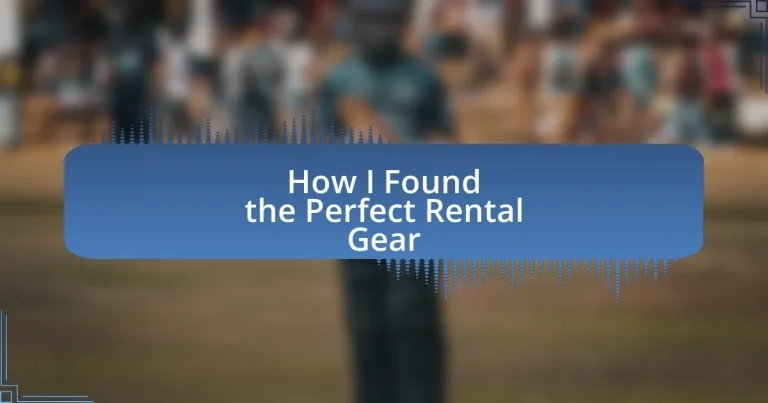Key takeaways:
- Assess your rental gear needs by considering the activity, climate, and level of support from rental companies.
- Research rental options thoroughly, comparing reviews, prices, and the quality of services provided.
- Evaluate gear quality by inspecting equipment, reviewing maintenance history, and seeking customer feedback.
- Create a comprehensive rental gear checklist and ensure timely returns, including inspecting and cleaning gear beforehand.
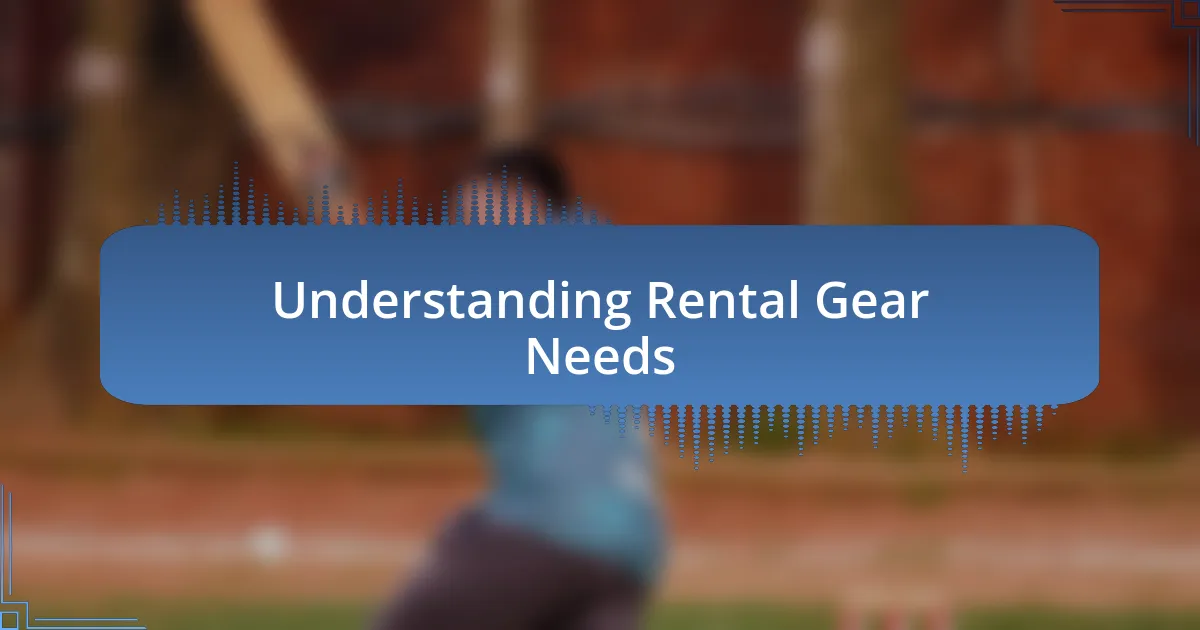
Understanding Rental Gear Needs
When considering rental gear needs, it’s essential to reflect on what activities you’ll engage in. I remember a hiking trip where I initially thought any old backpack would do, only to realize halfway up the mountain that comfort and fit were vital for my experience. Have you ever found yourself struggling because you didn’t choose the right gear?
Another factor that often gets overlooked is the climate and terrain of your planned adventure. During a summer paddleboarding excursion, I was caught off guard by sudden rain and chilly winds. It was a stark reminder of how essential weather-appropriate gear can be. What’s your take on preparing for unexpected conditions?
I’ve learned that evaluating your rental gear needs involves considering not just the basics, but also the level of support and expertise provided by the rental company. The staff at my favorite rental spot took the time to understand my skill level, which made a significant difference in my kayaking experience. Isn’t it reassuring to have knowledgeable people guiding your choices?
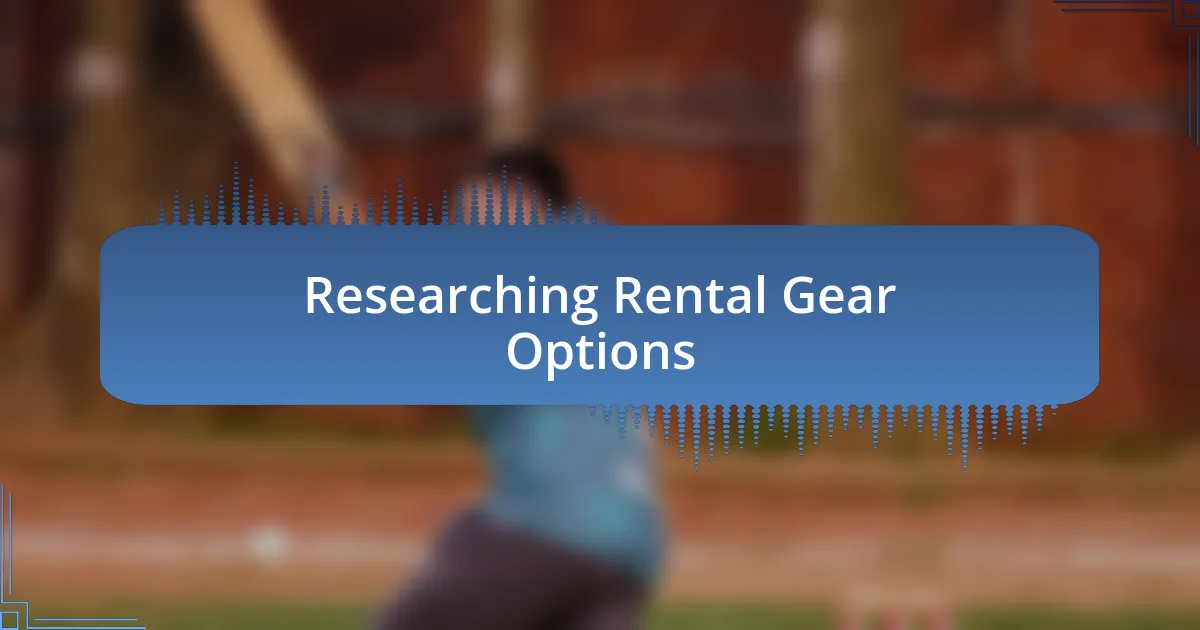
Researching Rental Gear Options
Researching rental gear options is a critical step in ensuring a successful adventure. The internet is brimming with resources, enabling you to compare options, read reviews, and learn about various rental companies. I remember spending an entire evening scrolling through reviews and forums, feeling excited yet overwhelmed by the choices. It was enlightening to see real experiences shared by others, which helped me avoid potential pitfalls.
Here’s a quick checklist to consider while researching rental gear options:
– Identify your specific needs based on the activity.
– Read reviews on multiple platforms to gauge reputation.
– Look for rental companies that specialize in your activity.
– Compare prices, but also consider the quality of gear provided.
– Check for any included services like delivery, pickup, and maintenance support.
– Reach out with questions; the responsiveness can be a good indicator of the company’s quality.
When I found a rental company that offered a personal touch—like having a phone consultation to discuss my needs—it felt reassuring. Those conversations not only eased my anxiety but also clarified what gear would best suit my expectations. Have you ever found that a simple conversation made all the difference in your preparations?
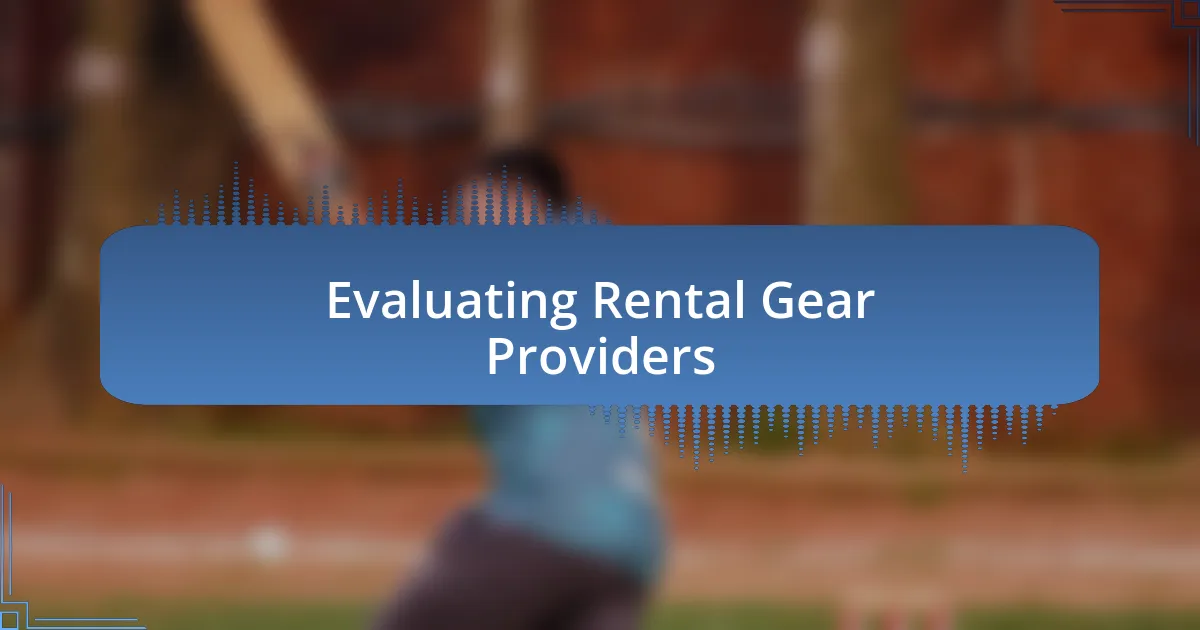
Evaluating Rental Gear Providers
Evaluating rental gear providers requires a nuanced approach to ensure you’re making the best choice. I remember a time when I was torn between two rental companies. One had a polished website and flashy promotions, but after some digging, I discovered that their customer service was often lacking. Conversely, the second company had fewer bells and whistles but received rave reviews for their responsiveness and support. That taught me the importance of prioritizing customer experience over aesthetics.
A key factor to consider is the rental company’s collection and condition of the gear. When I evaluated options, I made it a point to inquire about the age of their equipment. Some providers offer brand new gear, which is great, but I found a company that invested time in maintaining older models, ensuring they were in excellent condition. This balance between quality and age can really influence your rental experience.
Finally, I realized that comparing rental policies is critical. Some companies charge hefty fees for damage or late returns. I once overlooked this detail and ended up with unexpected charges. Reading fine print helped me understand what I was getting into. It’s always better to ask questions upfront to avoid surprises later.
| Provider | Customer Service |
|---|---|
| Company A | Inconsistent |
| Company B | Responsive |
| Company C | Exceptional |
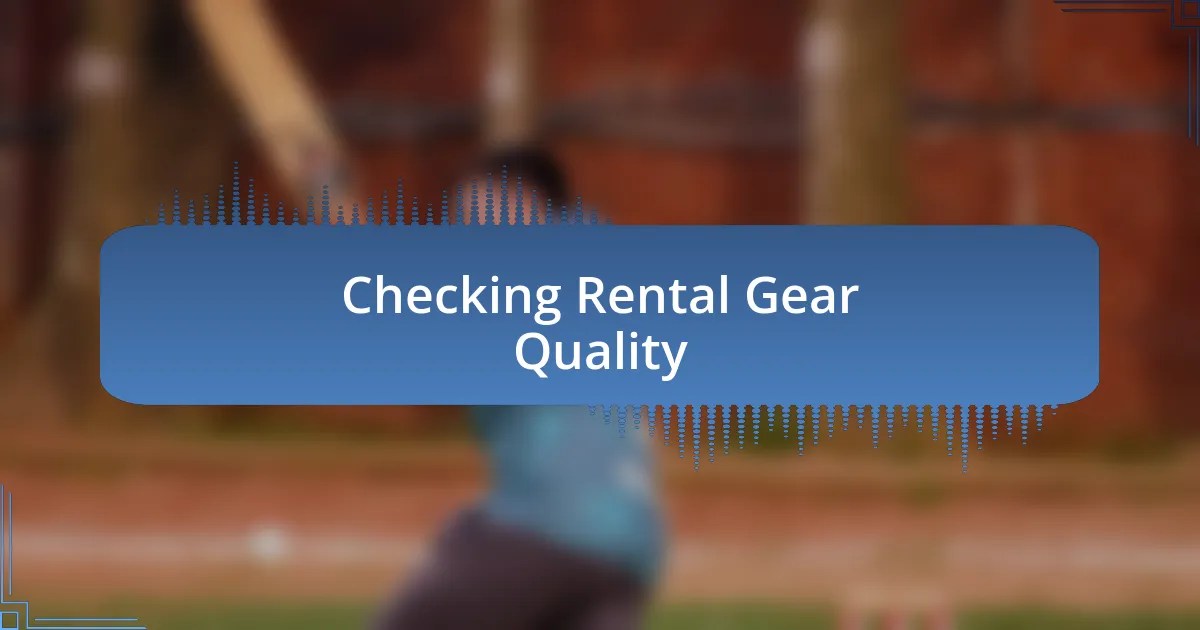
Checking Rental Gear Quality
When it comes to assessing the quality of rental gear, I always start by physically inspecting the equipment. I remember visiting a shop once where I noticed a mountain bike with rust on the chains and worn-out tires. It struck me that even if the price was appealing, riding on potentially unsafe gear wasn’t worth the risk. Have you ever paused to think how much a small oversight in gear quality could affect your whole adventure?
Another crucial element I look for is maintenance history. I’ve asked rental staff about how often they service their gear, and their responses can be quite revealing. For instance, one company shared their detailed maintenance logs, showing a commitment to keeping their gear in tip-top shape, while another seemed hesitant to answer, which raised red flags for me. How much confidence do you gain when you know the gear you’re renting has been properly cared for?
Lastly, I find it invaluable to seek out customer feedback regarding gear quality. I once read a review from a fellow renter who highlighted how a particular provider replaced their gear regularly. This commitment to quality actually influenced my decision to rent from them for a weekend getaway. Engaging with the community around you can be an excellent resource—what better way to gauge quality than hearing directly from those who’ve experienced it?
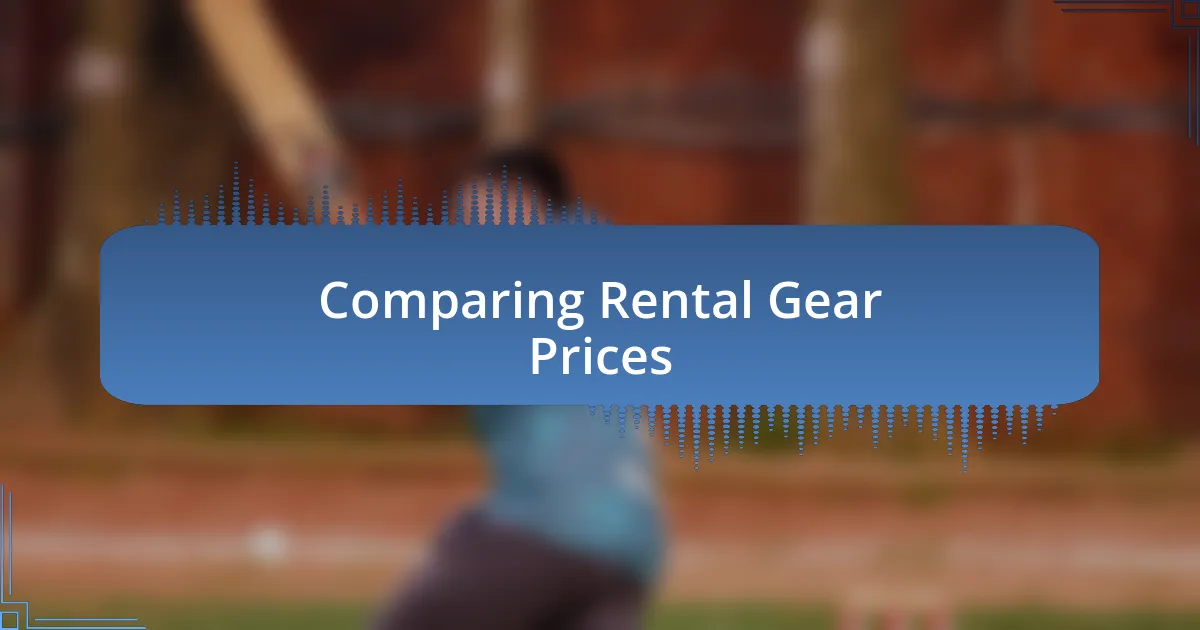
Comparing Rental Gear Prices
When comparing rental gear prices, I’ve found that a little detective work can go a long way. During my search for a kayak rental, I discovered that prices could vary dramatically between local shops and online platforms. It’s incredible how some places offer weekly rates while others charge by the hour; have you ever felt overwhelmed by the choices?
I once encountered a situation where two shops quoted similar prices, but one included additional perks like free life jackets and paddles. Those extras made a significant difference in overall value. It’s easy to get caught up in just the numbers, but I always remind myself to evaluate what each rental includes—hidden costs can sneak up on you if you’re not careful!
I’ve also learned to consider seasonal pricing. For example, I planned a winter ski trip hoping to rent gear, only to find prices skyrocketed during peak season. It taught me that timing can be just as crucial as the equipment itself. How often do we think about when we’re renting rather than just what we’re renting?
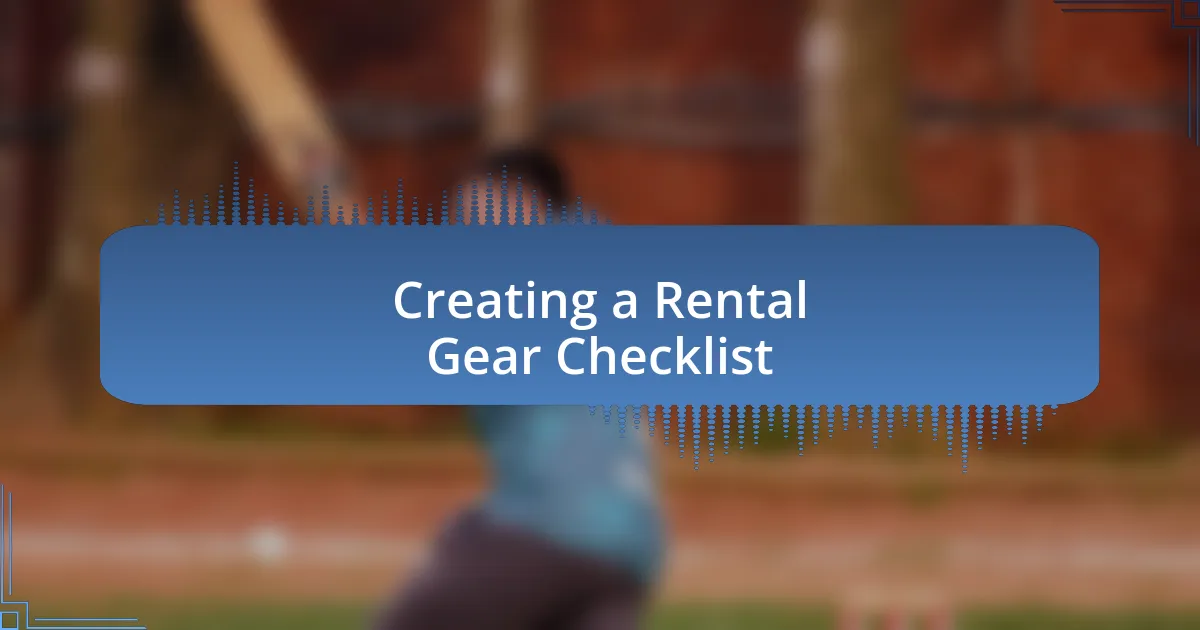
Creating a Rental Gear Checklist
Creating a checklist for rental gear is essential to ensure nothing gets overlooked. During my last hiking trip, I did just that and found that it saved me from packing unnecessary items while ensuring I had all the essentials. Have you ever gotten to your destination only to realize you forgot something crucial?
I suggest dividing your checklist into categories like clothing, safety equipment, and tools. This way, you can systematically tick off each item as you gather your gear. On one memorable camping adventure, I missed a simple headlamp, and let me tell you, navigating in the dark was an experience I don’t want to repeat!
Additionally, including a section for “last-minute additions” can be really helpful. I’ve had those moments where I realized I might want an extra water bottle or a backup power bank shortly before heading out. This not only gets me organized but also allows room for any spontaneous changes in my plans. Have you ever found yourself wishing you had considered an item that would have made your trip even better?
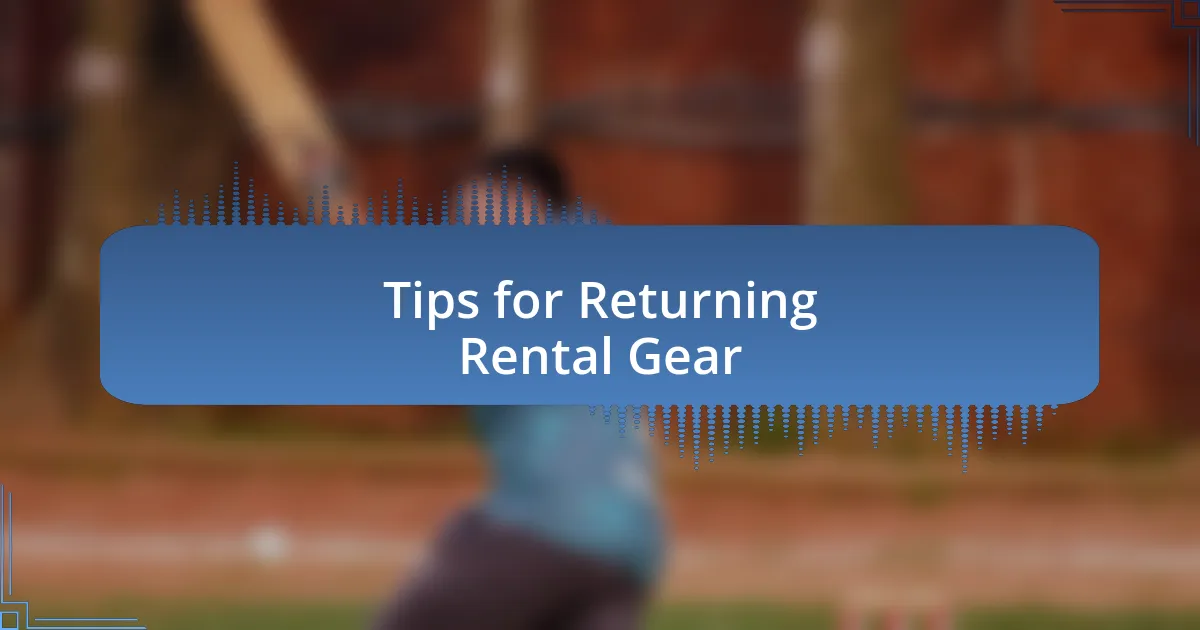
Tips for Returning Rental Gear
When returning rental gear, timing is crucial. I remember rushing to meet a deadline once, only to find myself stressed about returning my camping stove late. The rental company had a policy on late fees, and trust me, those extra charges can add up quickly. Have you ever experienced that sinking feeling of rushing against the clock?
Always inspect the gear before returning it. On one occasion, I found a slight scratch on a borrowed kayak. I had to address it with the rental place, which could have been avoided with a quick check. Do you take the time to double-check your gear, or do you assume everything will be fine?
Consider cleaning the equipment before returning it, if possible. During a recent trip, I made a habit of wiping down the rented tents and sleeping bags. It felt good knowing I was respectful of the owner’s property. Plus, it often speeds up the return process, making for a smoother experience. What little extra effort have you found pays off in the long run?
